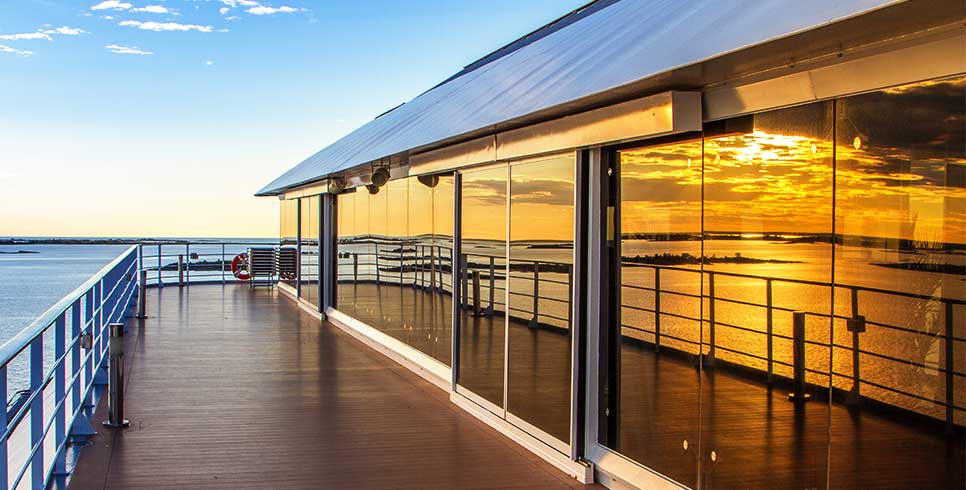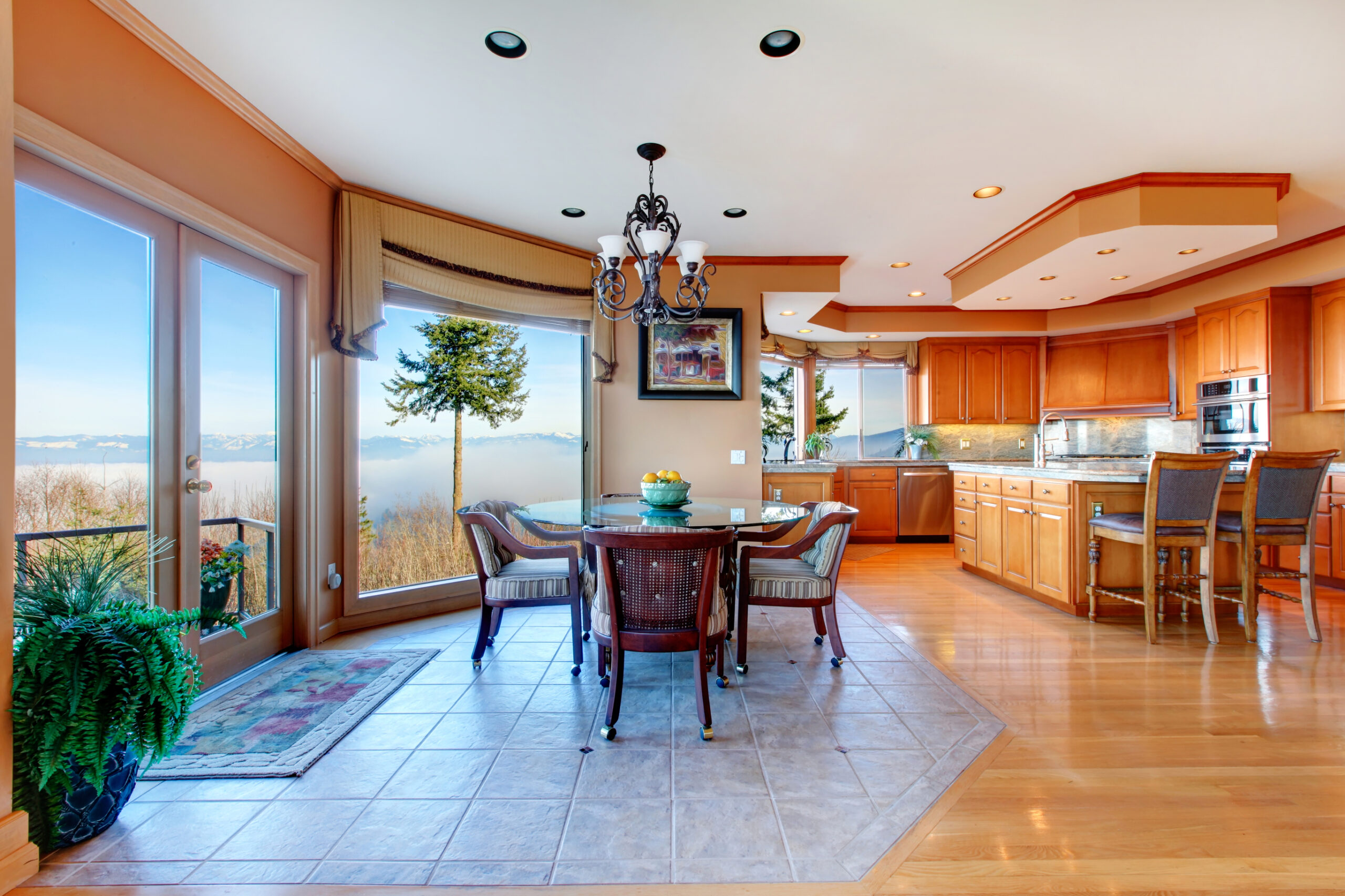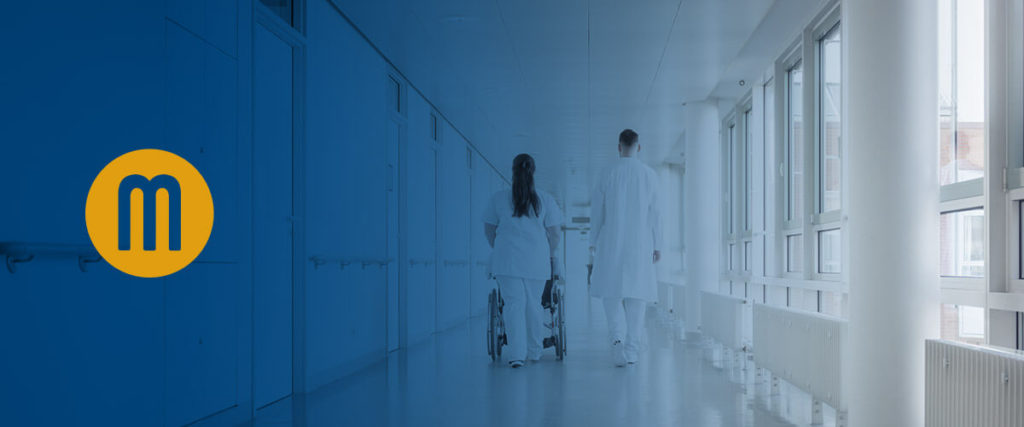
Healthcare facility design includes strict building regulations to ensure sterile conditions, proper ventilation and other qualities. One way hospital design architecture can meet these stringent health codes is to upgrade to commercial window tinting. By applying films to hospital windows, they become more than a structural aspect with light appeal. Tints maximize a window’s benefits like protecting us against UV rays and reducing energy consumption as well as adding privacy and reducing glare.
Let’s dive into our top seven tips for designing hospitals and how window tint factors in.
7 Design Considerations for Hospitals
A hospital is more than a building that supports testing, surgeries and other healthcare activities. It’s a place where families, friends, patients, doctors, surgeons, assistants and everyone in between spends time. As such, there’s more to the design than the technical aspects.
Seven hospital design considerations include:
- How can you protect patients and employees from harsh UV sunlight?
- What can you do to lower energy costs and consumption?
- How can you reduce glare?
- What can you install to slow interior fading?
- How can you create a peaceful, welcoming ambiance?
- What will help deter vandalism?
- How can you increase privacy for patients?
When you start to design a hospital building, consider adding commercial window tints to increase the building’s benefits. A hospital’s ambiance is crucial. Putting care into the facility’s ambiance helps keep people comfortable, reduce energy consumption, minimize glare for patients and provide a space where privacy is respected. Overall, the goal is to create a safe, welcoming and peaceful environment for occupants.
7 Solutions Window Film Can Provide
While windows open a building to outside views, allow natural light to enter and increase air flow, adding window tints can further their usability. Window films can provide these benefits:
1. Protect Patients and Employees From the Sun
Window tints increase UV resistance and decrease exposure to the sun, reducing the risk of skin damage. Commercial window films can block 99% of UV rays. Window films can help protect us from UV sunlight overexposure that can lead to sunburn, skin cancer, tumors and other harmful conditions.
Films can also protect technology like tablets, computers, laptops and cellphones along with healthcare technology like monitors, EKG machines, defibrillators, MRI machines and many others. When machines and technology overheat, they can malfunction. In an environment where steady and consistent support is critical, protecting these devices is just as crucial.
2. Lower Energy Costs and Consumption
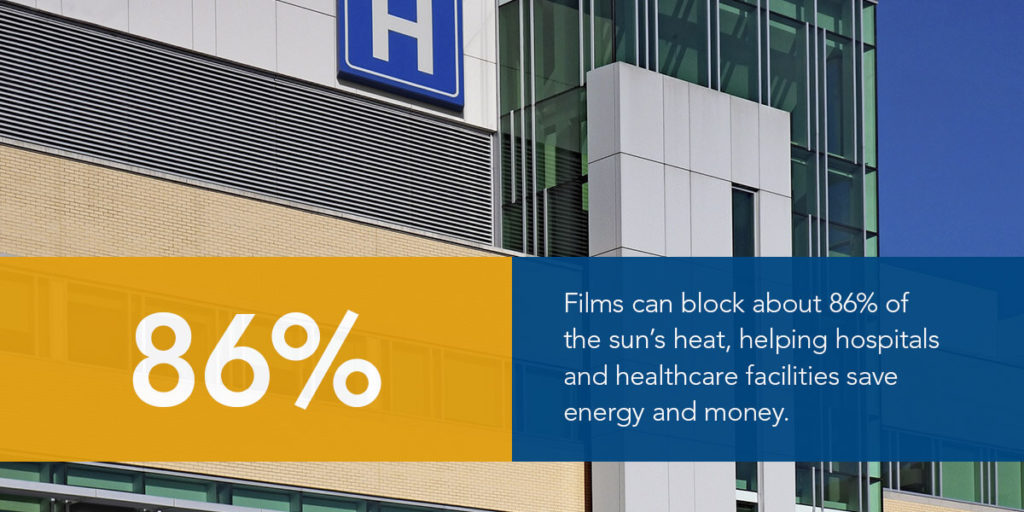
Films can block about 86% of the sun’s heat, helping hospitals and healthcare facilities save energy and money. Window tints absorb and reflect sunlight, creating a consistent indoor temperature throughout the year. They retain heat in the winter months and conserve cooler air during the warmer months while also decreasing hot spots throughout the building. In return, this helps to lower heating and cooling costs.
Tints also limit the influence of outdoor temperatures to regulate indoor temperatures. By maintaining stable temperatures, patients and employees can feel comfortable.
3. Reduce Glare
With different people moving in and out of a hospital throughout the day, how can you make it easier for them to see? How can you limit excessive eyestrain from glares? Window tints reduce glare and prevent squinting that strains the eyes. This benefit allows people to smoothly transition throughout the different wings of a hospital or rooms in a healthcare facility with ease.
Window films also improve visibility when using different technology like tablets or computers. Tints allow natural light to enter the building without the excessive glare, benefiting healthcare staff reading screens to help their patients.
4. Slow Fading of Interior Materials
When it comes to hospital waiting, maternity, intensive care and other rooms, commercial window tints can protect everything from the furniture, flooring and drapes to artwork, wallpaper and other things you want to limit fading of. Films deflect UV rays, slowing the fading process of various materials. Some materials can even deteriorate over time and discolor. With window films installed, you can maintain the integrity of each hospital room.
5. Create a Peaceful and Welcoming Environment
Taking a more patient-driven perspective on the design of a hospital or healthcare facility will help architects see the value in creating a welcoming and peaceful space. Window tints can add decorative touches, comfort and a pleasant ambiance for patients and employees. People don’t always want to close the blinds to block sunlight, so tints keep everyone comfortable while allowing natural light to transfer through.
Outside the building, commercial films can deliver a uniform and sleek look for a fresh and professional appearance. Regular glass leaves a glare where people can see different views of the street, parking lot, other buildings and traffic, but with tints, you can design a consistent image.
6. Deter Break-Ins and Vandalism
Vandalism may not be at the forefront of an architect’s mind when designing a hospital or other healthcare building, but tints make windows more durable, increasing security levels. Strengthening the window with an extra layer of protection, films make it harder for someone to break in by keeping the shattered glass together if they try to break a window. Commercial window films also make it difficult for vandals to see inside the building.
This protection is also beneficial during inclement weather conditions. Tints will protect people on the inside from injuries if the glass shatters from harsh weather.
7. Provide Exceptional Privacy to Patients
Window tints are not only for outdoor windows but are great for indoor usage too. Different shades of tint can provide privacy to patients, helping them feel more comfortable. Films can block other people’s view inside the entire building or specific rooms in a hospital that require an extra level of privacy. This can be appropriate for surgical windows, patient rooms, offices and check-in counters.
Extra Benefits of Window Tints
A tint is a multi-purpose and multi-beneficial addition to your healthcare facility windows, and when installed by the professionals, they have two additional advantages — a long life span and easy maintenance.
Window tints are high-quality and durable solutions that require a professional installation. When you partner with a reputable dealer like Madico® Inc., our tints are under the Manufacturer’s Warranty in North America. Our commercial installations can receive one of the best warranties in the industry.
Films are also simple to maintain, allowing the maintenance crew of the hospital or healthcare facility to properly preserve the window tint. Using a glass cleaner that doesn’t contain abrasive materials, spray the window and use a soft cloth, sponge or paper towel to wipe and a squeegee to dry. We recommend waiting at least 30 days after installation to ensure the curing process is complete.
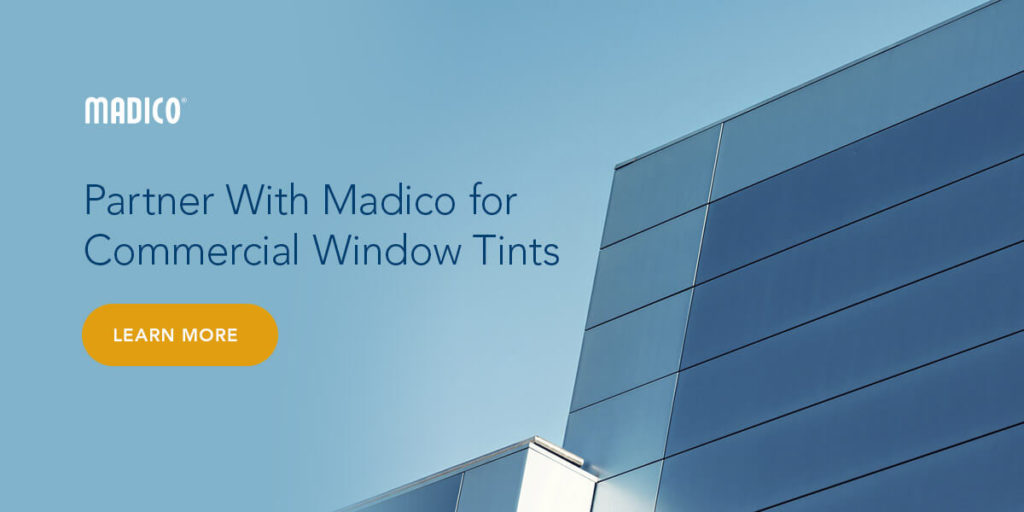
Partner With Madico for Commercial Window Tints
Madico is an innovative window film manufacturer that supports healthcare facilities and other businesses across the nation. Whether you’re prioritizing solar protection, building aesthetics or safety and security, you’ll find innovative Madico window films that suit your needs. When you have an idea of what will work for your design, you can rely on us to deliver top-tier, protective window films.
Learn more about our commercial window tint products or fill out this form to speak with a Madico representative with any questions you have.


